The following represents part 1 of a series. To make sure you don’t miss the next installments, click here.
“For I was an hungered, and ye gave me meat; I was thirsty, and ye gave me drink; I was a stranger, and ye took me in; Naked, and ye clothed me; I was in prison, and ye came unto me.” Matthew 25:35-36
What Does a Refugee Camp Look Like?
These are my first impressions in three refugee camps in Greece. My experiences over the week would vary wildly, giving me a different look at what life is like for refugees. (For the safety of those mentioned in this story, I will not be able to share the names or detailed locations of the refugee camps.)
Since visiting the refugee camps, the most common question I get from people is, “What do the camps look like?” In my experience, the camps are not what most people imagined. They were definitely not what I expected. For this reason, I want to describe and share the camps with you first. In later articles I will share more personal stories about the refugees, as well as insights on how volunteers can better serve this needy population.
Camp #1

At first glance it looks like a converted, dark industrial building, not a home. It had once been a chemicals factory. Now it houses more than 500 refugees, sometimes as many as 800. The ceiling was at least fifty feet high, and let in little light. The makeshift apartments are made out of drywall, but the walls stop at ten feet high. Every little sound inside and outside of the apartments can be heard throughout the building.
The walls are painted in bright colorful murals. The concrete floors have a shiny finish on them, always giving the illusion that the floor is wet. The floor is also often wet and sticky, so it’s hard to know if it’s just the shellac or a spill. Outside of the apartment doors are a collection of shoes, baby strollers, and a few toys. There is a constant dinginess about the place.
There are large communal bathrooms that are always in need of a deep cleaning. The kitchen is a large room with industrial, stainless steel countertops. Men squat before them, cooking on a hot plate on the floor. The countertops are empty and clean.
Out in the yard around the building there are chickens being raised for their eggs. There is a soccer (football) field of dirt that some volunteers began. (They ran into red tape and out of funding before sod could be put down.) Another ambitious group of volunteers built some lovely pergolas with seating. A small one room schoolhouse, and a “book house” (library) are also present. A small trailer provided by a medical organization for the use of visiting doctors and teams rounds out the external buildings.

Little kids run up and down the cavernous hallways in mismatched clothing. They should be in school, but the arrival of the newest batch of fresh-faced, smiling volunteers is more interesting to them than another day in a one room schoolhouse.
Adults are few and far between. Many suffer from severe depression and struggle to get out of bed. Others are just used to a later night lifestyle in the camps, and sleep in late. But children are children, especially the toddlers, and have never needed an alarm clock to wake up at the crack of dawn. It’s not unusual to see a toddler in last night’s diaper running around the building alone. After all, where is he going to go? They are locked in. It’s not a prison. But you would never know from the tall fence and locked gate outside.
There is no privacy in this camp, and due that, no dignity. Families, husbands and wives, have no way to be alone, without others hearing or seeing them.
This is considered to be one of the better run camps. A large international NGO and the Greek military are responsible for it. Although no one has seen the military there except for several months ago when there was a fire. Because of the NGO there is a huge warehouse full of donations. Used clothing, blankets, and shoes from around the world, sit in a mountain in the back the building. I spent several hours helping to sort through those donations, and quickly came to realize that people donate worthless items. One used shoe insert? Camisoles (for conservative Muslims)? Jeans with holes in the crotch. One man’s trash, is not always another man’s treasure. Often, it’s still just trash.

The NGO doles out the food to the families each day. A family member goes to the warehouse door at the assigned time holding a plastic milk crate. A volunteer checks the family’s name off of a list, and checks to see how much food they are allotted for the day. The food usually includes several onions, some carrots, potatoes, and eggs. Once a month, a family is allowed to come to the warehouse to “shop” for clothing among the sorted donations. A mother will just have to hope that there will be seasonally appropriate clothing for her children in the right sizes among the available goods that day. She has no idea that in the back of the warehouse there are thousands of unsorted shirts, pants, coats, and shoes, guaranteed to have what she needs.
Of all the things I experienced in the week of providing medical care in refugee camps, it’s the children of this camp that stood out to me the most. Their plight is not their fault. Many of them were born in refugee camps. Their past countries and homes are a distant memory. As one little girl explained why her family moved, she said, “Bomb come. Hit school. Boom. Gone.”
These children are not just growing up in horrible conditions. They are growing up in an unprecedented, unfortunate situation. Each week, if not every other day, a new group of shiny, clean, fresh-faced, eager volunteers shows up at their camp, armed with toys, stickers, hugs, and games. These children who have nothing, and who live in the poorest of circumstances, are being forced into a strange sense of entitlement. They expect every new stranger and friendly face to hand over more cheap toys, and want to play with them, because that is what happens in their world.
They form quick and fast attachments to people who disappear the next week, never to return. They know that when the friendly volunteer shrugs and says, “I’m all out of candy!” that they are lying. They’re really just saving the stickers or toys for another child. So the children get forceful, and dig around in personal effects, looking for the held back toys. It’s not their fault. It’s just the situation that has been forced upon them by well-meaning volunteers.
Children in camps don’t need more dollar store toys. They need books and educational materials. They need cash to help their families make a new start and become legal citizens. They don’t need more stickers and crayons.
This camp has also been exploited by well-meaning volunteers. When they see a camera or phone come out, they quickly cover their faces and say, “No Facebook.” And they mean it. Many of these people are on the run from someone who would do them harm, and they don’t want to be found. While we are there, a dental organization shows up with hygiene kits for the children. Along with them they brought a professional photographer. This is what I mean by exploitation. Every day another person or group shows up and wants to take pictures to show the world what good they did that day. The pictures, just like the stickers, and cheap toys, are more for the benefit of the volunteer, and not for the refugees.
Camp #2

The Kurdish refugees live in small “iso-pods” or 2 room trailers, no more than 300 sq ft. They tend to sleep on mats on the floor that become the place where they sit during the day. A small sink and a hot plate is where they cook their food. Some of the families have a freezer that doubles as a table and shelf. The freezers struck me as odd. They have few resources and materials, and yet they have large refrigerator sized freezers. The kind Americans keep as a second freezer for food storage in the garage. I asked about it and learned that there are only a few freezers, and no one has refrigerators.

Several families share the freezer. However they aren’t that useful, since most of the food they are given are whole vegetables that don’t freeze well. They don’t have Tupperware or plastic wrap to save leftovers (not they have ever had leftovers from a meal), so not much goes into the freezers. Another example of a well-intended volunteer group who saw a need and tried to fix it. But in the end, it fell short. The bathroom is just a small toilet and a sink, about the size of an airplane bathroom. No shower or bathtub, it never occurred to me to ask where they bathe. I presume it’s with a bucket outside, or sponge baths.
Their camp is in southern Greece, near the coast, where there is crystal clear water, and a blue horizon for as far as the eye can see. The beauty of the beaches nearby are what make Greece famous for vacationers. But the people in the camps have probably never seen the beauty just a few kilometers away. The camp is hidden from the main road, behind a landfill. It’s a giant dump full of debris, waste, and unidentified objects. The largest mound of waste is only twenty or thirty feet from the closest trailer. It’s every mother’s nightmare.

The landfill is seen just a few feet beyond the small garden the camp keeps.
We found that most of the people in this camp are illiterate. And many don’t speak the same dialect as the others. Neighbors have to rely on charades to communicate with each other. When we pulled out our bathroom scale to get vitals on our patients, the whole camp lined up to get weighed. No one in the community owns a scale, so no one knew how much they weighed. It was a strangely exciting novelty.
The people in this camp are humble and kind. There was a true feeling of community and connection among them. In such a small village everyone helps to raise the children together. Adults play with the children, pick up a crying toddler to soothe them, and stop small fights over who gets to blow bubbles next, without a care for who’s child it is.
The smallest member of the community is about six months old, a chubby cheeked little girl. She is passed from person to person for hugs and kisses. No one passes by her without stopping to nuzzle her chubby cheeks. There is a feeling of neighborly love in this camp that was missing in the previous one.
These are people who have nothing. They rely on weekly visits from different charities to deliver them food and staples. Our team is the first medical visit they have had in almost two months. They line up in the hot sun and wait for hours to ask the doctors about headaches, chest pain, infected wounds, and sadly, infertility.
They were attentive to our needs, running to get us water bottles or chairs, if we looked hot or tired. They begged us to eat with them (we declined). They asked us to pose in pictures with them. I brought my Fuji Instamax camera, and took their pictures. Fathers ran back into their homes to bring out the whole family for me to take their pictures. They cherished the little 2 x 3 inch instant photographs I gave them.
“My friend, thank you, my friend,” they said over and over to us.

Aida runs off with the green stool again. Toddlers will be toddlers, no matter where they live.
There is a little girl there, a toddler, I called Aida. She’s about 18 months old, and wore a onesie and diaper. She was full of sass, and won my heart over in an instant. She refused to let me hold her or pick her up. But she made sure she stayed a close arm’s distance away from me the whole day. Any time I stood up, she would quickly steal my small green stool that was as tall as she was, and toddle off with it. At the end of each day at that camp, we had to search for the missing green stool. That little stinker is my favorite memory of the refugee camps.
A young mother, who didn’t speak any English, came up to me and a coworker, holding her young child. She spoke to us in her native tongue, gestured at her child, and then points to the landfill beside the camp. We didn’t have to speak her language to understand her distress. How is she supposed to raise her child and keep him safe when are they are so close to something so toxic? I wish I had a way to make it better for her.

Kurdish child looks out of the wire fence around his refugee camp at the rubble and waste surrounding it.
There is no school at this camp. There isn’t an NGO or government agency watching over them. There is a feeling of abandonment and forgotten, and yet also of community and love. 75 people living in tiny pods behind a dump, hoping someone remembers to come for them.
Camp #3
Camp #3 was another Kurdish camp. The situation there was completely different from the other two camps. It’s an old, decrepit apartment building, made of concrete walls and floors. The hallways are filthy. Disgusting even. But a glance inside the private rooms reveal clean, pristine areas. Families from 3 people to 10 people might live in one of these large bedrooms, lined with bunk beds. They cook their food on stoves and ovens in the hallway, but eat as a family on a rug or blanket on the floor of their rooms.

A stove is kept on in the hallway for the men to light their cigarettes on. An old t-shirt is stuffed below it to keep it balanced.
Two hookah cubes sit on the burner.
This is a camp of freedom fighters. These are the people who stood up to al-Bashir in Syria, and fought in combat. The walls are covered in pictures of fallen soldiers, to help them remember and pay respect to those who gave their lives. As an American, it is jarring to see tributes to the Communist party on the walls. These are the people who fought for freedom so they could be Communists, and not live under a tyrant’s rule.

A young boy proudly displays his artwork depicting his love for the PKK (Communist party).
They have a community room they call the canteen. It has a TV in it, a small kitchen where they prepare and serve tea, and dozens of books in multiple languages. This one small room gives this camp a totally different air than the others. You know this is a well-organized and run community. You can quickly feel the difference. They are living in difficult and harsh circumstances, but these are not a helpless people.
They had a small clinic our medical team was allowed to use. There was a medicine cabinet full of supplies left behind or donated by previous volunteer groups. It was a complete mess. It became my job to organize it. By the end of the day I had discovered that the camp’s de facto leader kept a key to the clinic and the medicine closet. He didn’t understand which drugs were for what purposes. I organized it so that he could easily access the medications he understood and would regularly need, like acetaminophen and ibuprofen. I locked up things like nitroglycerin or narcotics. It wasn’t a tough or demanding job. But the man’s gratitude brought him to tears when he saw how he could help his own people with the organized closet. He insisted several times that we take the antibiotics with us, to give to other camps to help them. We had to insist that we leave them behind. He reluctantly allowed it.
The refugee camps are humble places. These are not freeloaders living off of the charity of others. These are people who walked hundreds, if not a thousand miles, to escape oppression, and to find safety for their children. What I found were camps of desolation and depression, but people full of hope.
When I got home and described the camps to others, I was asked, “What about religion? Did you have to cover your head? Go to prayers? Stop while they prayed? Was there a mosque in the camps?” The answer is no. I never saw anyone go to prayers. I never heard a call to prayer or saw a mosque. I was never asked to cover my head (although I brought a scarf with me in case). I never saw any sort of religious symbol in any of the camps, except for a piece of paper outside of a small room that said, “This room to be used for prayers at the following times…” I never saw anyone go in it.
In my next two posts I will share the story of Ahmar, a young man I met in one of the camps. I will also discuss more about the plight of the refugees, and what sort of help they truly need from the rest of the world.
Part Two: Meet Ahmar: A Refugee’s Story
Erin Ann McBride is equal parts Anne Shirley, Mother Theresa, and Mary Poppins. She’s perpetually single, an imaginative writer, humanitarian, loves children, and goes where the wind blows her. She’s a native of the Washington, DC area, but currently calls Salt Lake City home. She recently left her 15 year career in marketing to pursue her lifelong goal of a degree in social work. She has worked in humanitarian causes around the world, and is very interested and involved in the refugee crisis, international adoption, and fighting human trafficking. She is the author of 3 fiction books, 3 nonfiction books, and hundreds of articles. You can learn more about her at www.Facebook.com/AuthorErinAnnMcBride.








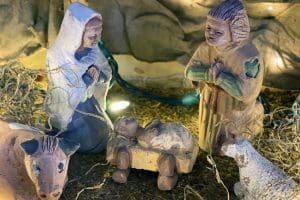




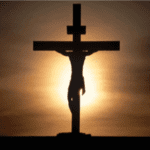
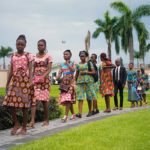
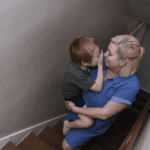
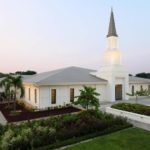

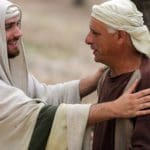
DJOctober 2, 2017
I look forward to your future articles and learn more of your experiences and insights as to ways we may best be able to help our brothers and sisters in such difficult and sad situations.